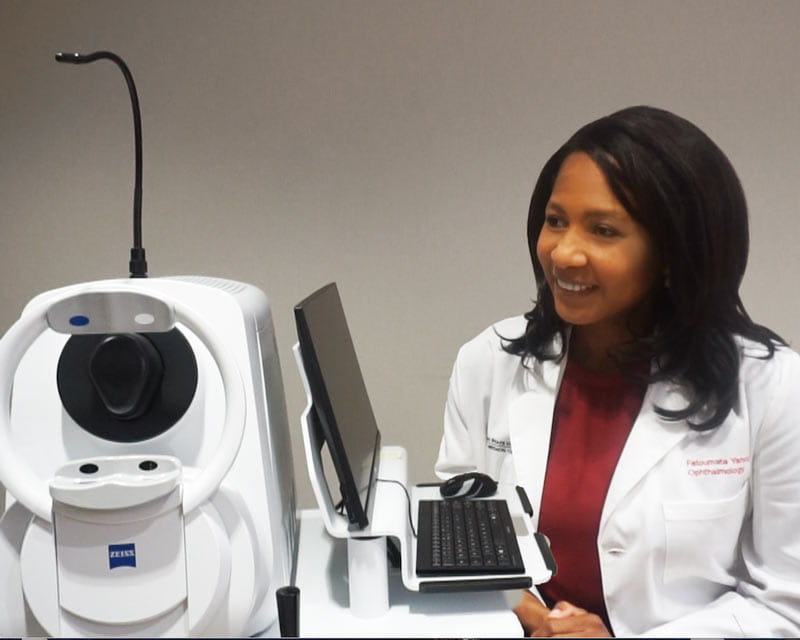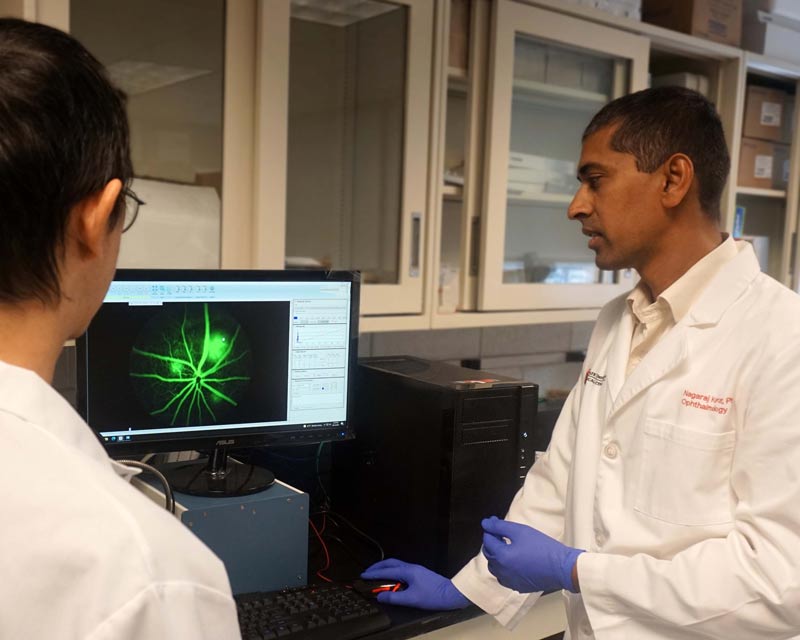
Swept-source OCT angiography reveals exquisite details of ocular structures
 In recent years, inflammation — an essential protective response to injury and infection — has been linked to an increasing number of diseases and conditions. Now, a research team at The Ohio State University Wexner Medical Center is studying how the immune system’s inflammatory response can play a role in the development of age-related macular degeneration (AMD) with the hopes that new treatments for preventing and treating AMD can be developed.
In recent years, inflammation — an essential protective response to injury and infection — has been linked to an increasing number of diseases and conditions. Now, a research team at The Ohio State University Wexner Medical Center is studying how the immune system’s inflammatory response can play a role in the development of age-related macular degeneration (AMD) with the hopes that new treatments for preventing and treating AMD can be developed.
Faculty member and researcher Nagaraj Kerur, PhD, has been researching AMD since 2011. The recent work in his laboratory has revealed that a signaling pathway — the cyclic GMP-AMP synthase (cGAS) stimulator of interferon genes (STING) pathway — can alert cells about age-related DNA damage, and the resulting immune response may contribute to development of AMD. His team at The Ohio State University College of Medicine is working with animal models to find and test ways to stop this inflammatory response. Their work may eventually lead to new and better treatment or prevention options for both wet and dry forms of AMD, the leading cause of irreversible blindness in the developed world.
“We know serious health problems are linked to a chronic, uncontrolled or inappropriate inflammatory response,” says Dr. Kerur. “Better understanding the immunological pathways activated during aging-associated inflammation will help us unravel promising therapeutic targets for many human diseases, including AMD.”
A microbiologist and immunologist, Dr. Kerur is applying his knowledge and training in advanced immunology to ophthalmology. His laboratory uses highly advanced molecular, genetic and biochemical tools in cell culture and animal models, such as CRISPR/Cas9 genome engineering, confocal microscopy, next-generation sequencing, lentivirus and adeno-associated virus (AAV) gene delivery and in-vivo ocular imaging.
Dr. Kerur explains that with aging and oxidative stress, consequent damage to DNA can trigger inflammation and the DNA damage response system. His recent research has showed that the enzyme cGAS alerts cells of this DNA damage. The resulting release of cytokines and signaling events can lead to tissue damage and inflammation, which can lead to deterioration in the macular region of the retina.
In wet or exudative AMD, abnormal blood vessels form under the macula region of the retina, and these vessels can leak and cause scarring. Dr. Kerur’s team has identified a proangiogenic activity of telomerase in mouse models, creating a better understanding of abnormal blood vessel formation in the eye and potentially the development of new therapeutic agents for AMD and other conditions involving neovascularization. His immunological research is also contributing to a growing body of knowledge about inflammation and the immune response, and how underlying inflammation can contribute to a wide range of diseases and health conditions.